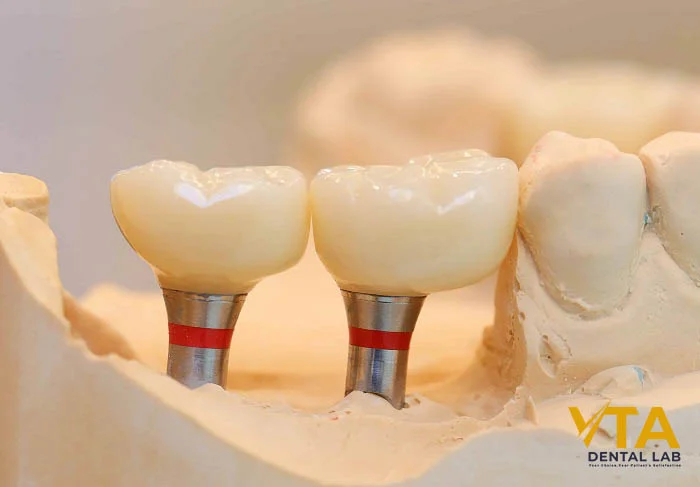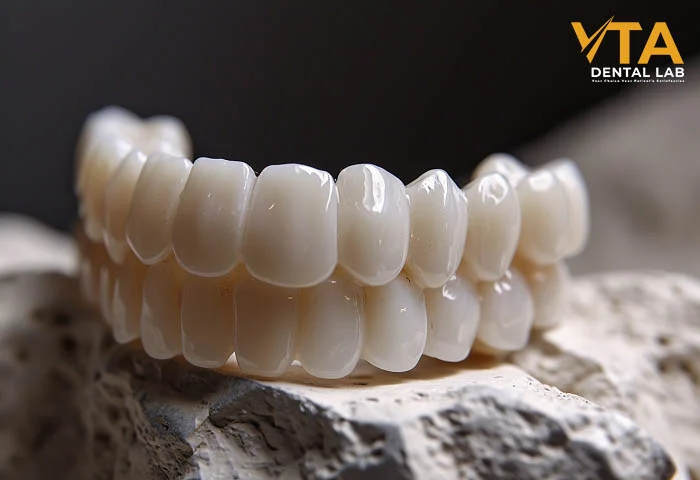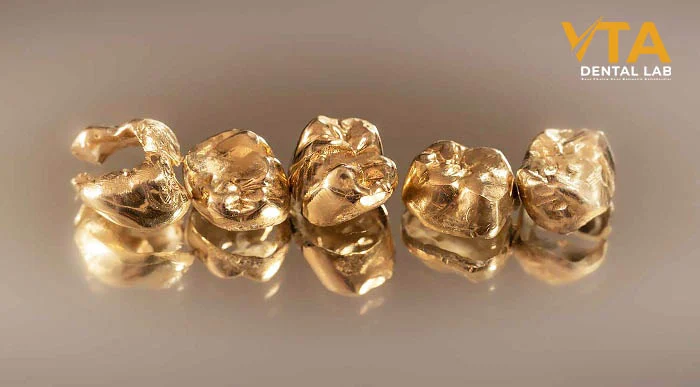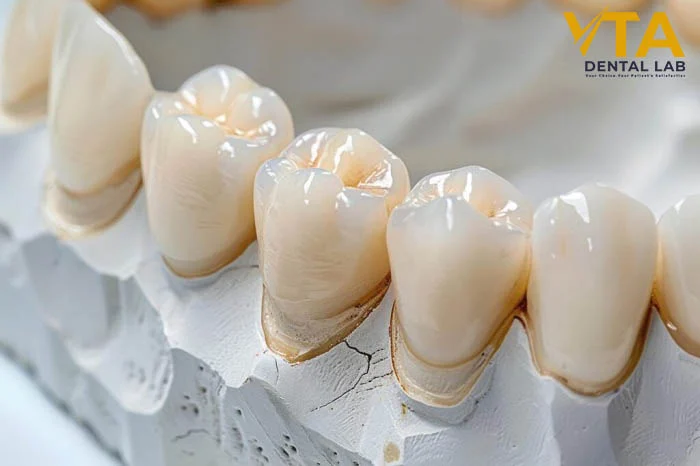Understanding 5 Types of Dental Crowns
Dental crowns play an integral role in restorative and prosthetic dentistry. With advancements in dental materials and digital technologies, clinicians now have a wider array of crown types to choose from, each offering unique benefits and limitations. Understanding the nuances of different crown types allows dental professionals to provide tailored, evidence-based treatment plans for optimal functional and aesthetic outcomes.
What Are Dental Crowns?
Dental crowns are fixed prosthetic restorations designed to completely encase a damaged, decayed, or endodontically treated tooth. Their primary function is to restore the tooth’s morphology, strength, and function while also improving aesthetics. Crowns may also be placed on dental implants to serve as the visible replacement for a missing tooth.
Modern crown fabrication typically involves CAD/CAM technology or traditional lost-wax techniques, with material selection based on occlusal demands, aesthetic priorities, biocompatibility, and the location of the restoration in the arch.

Types of dental crowns include zirconia, porcelain-fused-to-metal (PFM), gold, and all-ceramic restorations
When Would You Need a Dental Crown?
Dental crowns are indicated in various clinical scenarios, including but not limited to:
- Extensive Tooth Decay: When a tooth has significant structural loss that cannot be restored with a filling.
- Post-Endodontic Treatment: To reinforce structurally compromised teeth after root canal therapy.
- Fractured or Cracked Teeth: To stabilize cracks and prevent further propagation.
- Cosmetic Rehabilitation: To address discoloration, shape discrepancies, or minor misalignments.
- Restoration of Dental Implants: As part of single-unit or full-arch implant prosthetics.
- Occlusal Rehabilitation: In cases of attrition or erosion requiring full-coverage restorations.
Types of dental crowns
Selecting the appropriate crown material is a critical clinical decision that impacts the longevity, biocompatibility, and aesthetic success of restorative treatment. Factors such as occlusal load, remaining tooth structure, aesthetic expectations, and cost considerations all influence the choice of material. Below is a comprehensive analysis of the five most common types of dental crowns used in contemporary dentistry.
1. Zirconia Crowns
Zirconia crowns are fabricated from zirconium dioxide (ZrO₂), a high-strength ceramic material known for its exceptional mechanical properties and chemical stability. With flexural strength ranging from 900 to 1200 MPa for full solid zirconia and approximately 600 MPa for high-translucency variants, zirconia is well-suited for posterior restorations where occlusal forces are significant, as well as for long-span bridges.
Its high fracture resistance and minimal wear make it ideal for bruxism patients, while its excellent biocompatibility reduces inflammation and supports gingival health. Advances in CAD/CAM technology allow for precise design and marginal integrity, and modern sintering techniques, such as speed-sintering, significantly reduce laboratory turnaround time.
However, full solid zirconia may fall short in anterior aesthetics due to lower translucency compared to layered ceramics, and chairside occlusal adjustments require specialized diamond burs to prevent microcracks or surface degradation.

Layered zirconia is one of the most aesthetic types of zirconia crowns, combining beauty with function
2. Porcelain-Fused-to-Metal (PFM) Crowns
PFM crowns consist of a metal substructure, crafted from noble, semi-noble, or base metal alloys, coated with a porcelain veneer. This hybrid design combines the structural durability of metal with the aesthetic properties of dental ceramics. The veneering porcelain, typically feldspathic or leucite-reinforced, provides a reasonable cosmetic outcome, particularly in the premolar region.
The metal framework confers high tensile strength, making PFM crowns a reliable choice for posterior restorations and multi-unit bridges. PFM crowns are versatile in terms of marginal design and can be adjusted intraorally with relative ease. However, chipping of the veneering porcelain remains a concern over time, and gingival recession may expose the underlying metal collar, compromising aesthetics.
Furthermore, patients may experience allergic reactions if non-precious alloys are used. Despite these limitations, PFM crowns continue to serve as a valuable restorative option when both function and moderate aesthetics are required.

Porcelain-fused-to-metal crown is showcased as a classic type of dental crown with balanced strength and appearance
3. All-Ceramic Crowns
All-ceramic crowns, especially those made from lithium disilicate materials such as IPS e.max, offer superior aesthetics, making them the gold standard for anterior restorations. These crowns exhibit flexural strength between 360 and 500 MPa, sufficient for use in anterior and some premolar cases.
Their optical properties closely mimic natural enamel, with excellent light transmission and minimal opacity. The absence of a metal substructure eliminates the risk of gingival shadowing or discoloration, and the crowns are ideal for patients with thin biotypes or metal sensitivities. All-ceramic crowns also support adhesive bonding, improving marginal seal and retention.
However, they require meticulous technique in both fabrication and cementation. They are contraindicated in cases involving heavy occlusal forces or long-span prostheses due to their relative brittleness. Moreover, in situations with dark underlying tooth structure, such as post-endodontic teeth, adequate ceramic thickness is essential to mask discoloration, which may necessitate more aggressive tooth preparation.

Chart illustrating key differences between common types of dental crowns, helping patients and dentists decide
4. Full Cast Metal Crowns
Full cast metal crowns remain one of the most durable restorative options available, particularly suited for posterior teeth where aesthetics are less critical. These crowns are fabricated from high-strength dental alloys, including high-gold content alloys, palladium-based alloys, or base metals such as nickel-chromium and cobalt-chromium.
The inherent ductility of metal allows the crowns to resist fracture and distribute occlusal forces efficiently. A significant advantage of full metal crowns is their conservative tooth preparation, preserving more natural structure compared to other crown types. They also exhibit excellent longevity and minimal wear on opposing dentition. From a functional standpoint, full metal crowns are unmatched in reliability.
However, their metallic appearance limits their use in visible areas, and some patients may experience galvanic reactions or metallic taste, particularly when dissimilar metals are present intraorally. Despite the aesthetic drawbacks, full metal crowns are still indicated for complex occlusal rehabilitation, elderly patients, or situations requiring maximal mechanical performance.

Metal dental crowns among the types of dental crowns are known for superior strength in molar restoration
5. All-Resin Crowns
All-resin crowns are primarily used as interim restorations during multi-phase treatment plans or for patients seeking low-cost solutions. These crowns are typically made from self-curing or light-cured composite or acrylic resin materials and can be fabricated chairside or in a laboratory.
Their main advantage lies in the speed and ease of fabrication, as well as the ability to make quick intraoral adjustments to the occlusion and contour. All-resin crowns are particularly useful for guiding soft tissue healing, assessing occlusal schemes, or serving as temporaries while definitive crowns are being fabricated.
However, their mechanical properties are inferior to those of ceramics or metals—they are prone to fracture, wear, and discoloration over time. Consequently, they are not recommended for long-term clinical use. In a clinical workflow, resin crowns serve as a valuable transitional tool that bridges the diagnostic and final restorative phases.

In summary
Choosing the right type of dental crown requires careful consideration of both clinical factors and restorative materials. Each crown type—from Zirconia and PFM to all-ceramic, metal, and resin—offers unique characteristics in terms of strength, aesthetics, cost, and clinical application.
At VTA Dental Lab, we understand that there is no one-size-fits-all solution in restorative dentistry. Our team of highly skilled technicians collaborates closely with dentists to select the most appropriate material and design for each specific clinical case.
Every crown produced at VTA is meticulously crafted using advanced CAD/CAM technology and adheres to strict quality control standards, ensuring optimal precision, durability, and aesthetic outcome for your patients. Contact us today to discuss your first case—we’re here to support you every step of the way.